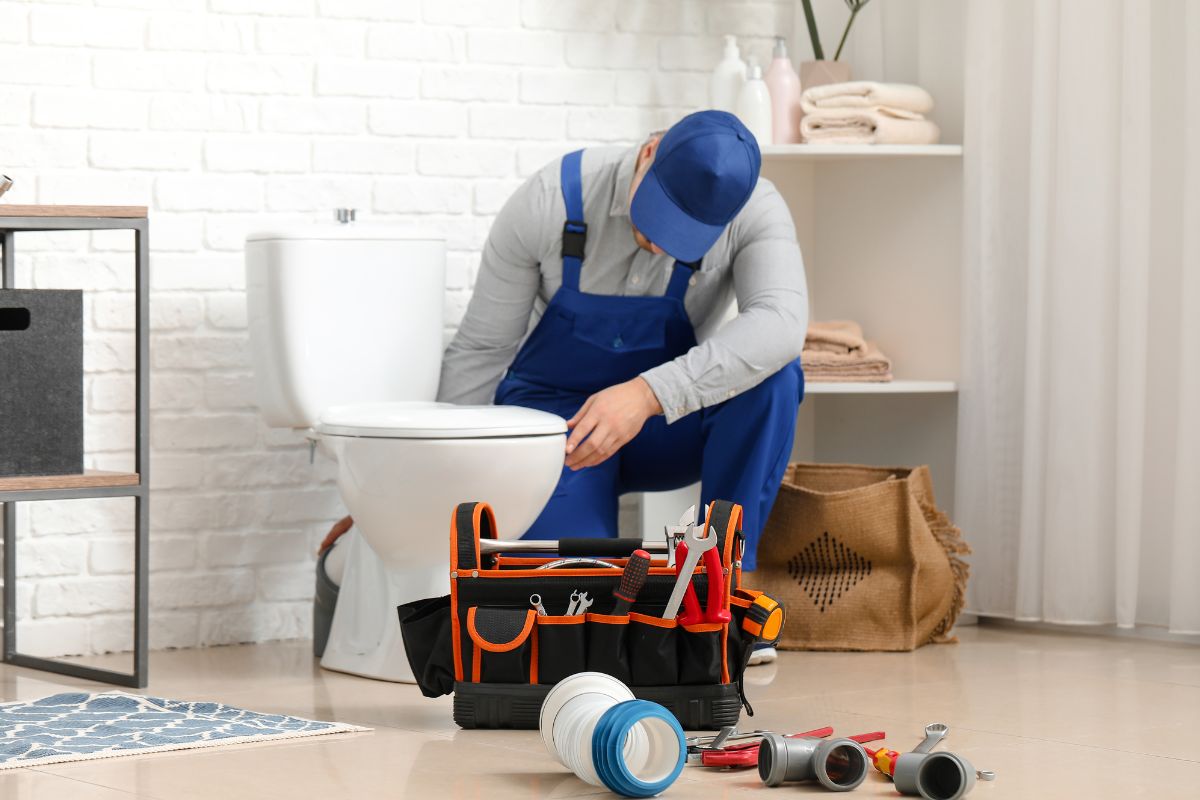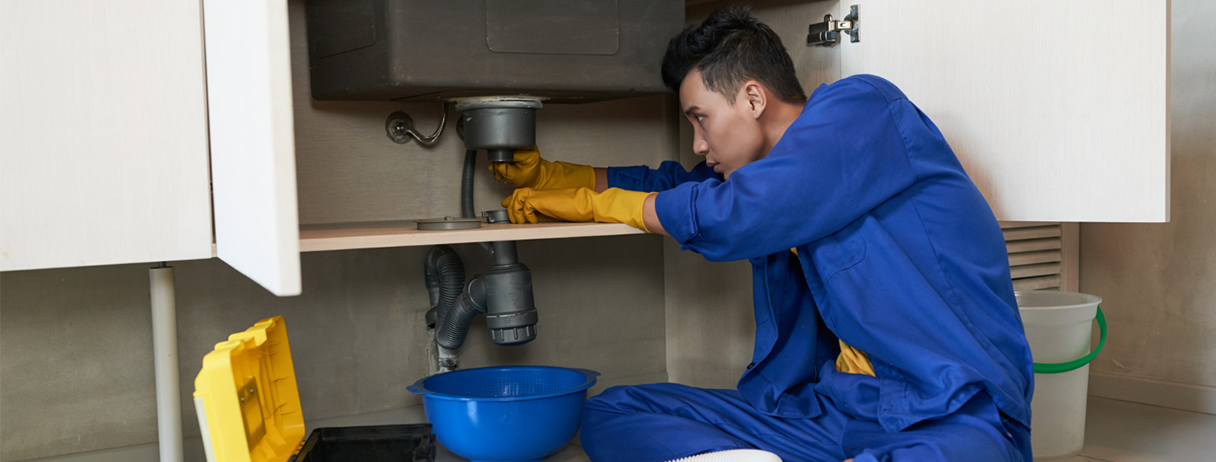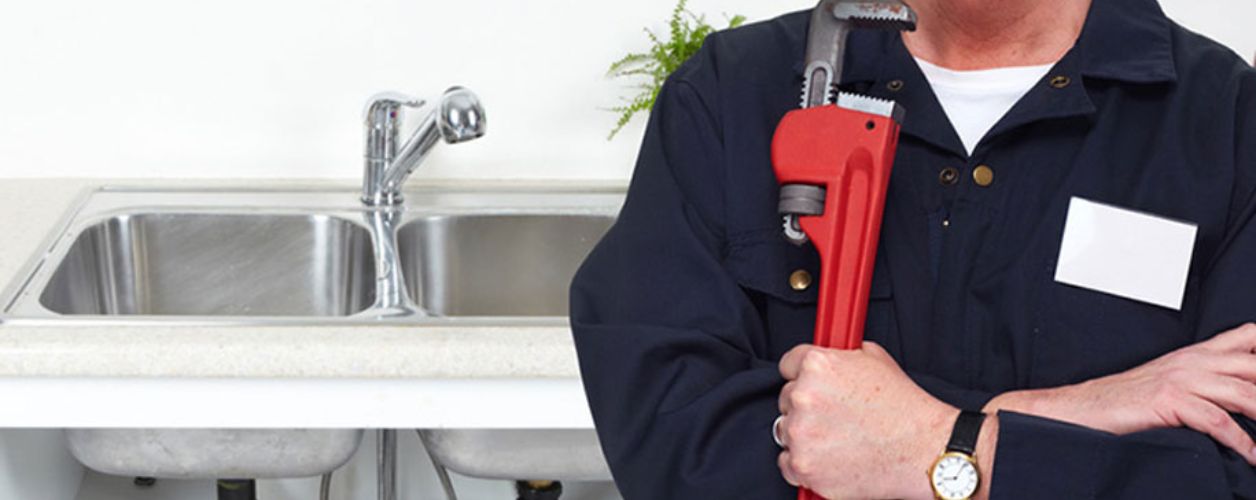How Much to Install a New Toilet Australia?
Want to install a new toilet or replace it with the older one? Installing a new toilet is essential to bathroom renovations and home improvement projects to ensure comfort and functionality. The type of toilet, the difficulty of the installation, and whether the current plumbing needs to be modified are some variables that affect the cost of toilet installation.
In Australia, professional toilet repair and installation costs between $200 and $1,000, including materials, labour, and the toilet unit. Generally, standard two-piece toilets are less expensive than more upscale ones like wall-mounted or smart toilets. If plumbing lines need to be adjusted, old toilets need to be removed, or unplanned repairs are required, more expenses can result.
Although do-it-yourself installation can save money, it takes sophisticated expertise to prevent damage or leakage. Employing a professional guarantees a smooth and effective procedure, protecting water efficiency and long-term functionality. Homeowners may make wise judgments and efficiently budget by knowing the cost breakdown.
Factors Affecting The Cost Of Toilet Installation
Several variables can affect the price of installing a toilet:
- The type of toilet: The type of toilet is important; traditional two-piece toilets are usually less expensive to install than smart or wall-mounted toilets, which need sophisticated electrical or plumbing work. The price of special additions like heated seats or dual-flush systems goes up.
- Labour expenses: The experience of the plumber, the job's location, and its intricacy all affect labour expenses. Labour is typically more expensive in urban areas than in rural ones. Relocating, upgrading, or repairing existing pipes raises the cost. Furthermore, the cost is increased by removing the outdated toilet, particularly if disposal expenses are involved.
- The condition of the bathroom: The state of the bathroom is an additional consideration. The total cost increases, for example, if the floor or subfloor needs to be repaired due to damage. The cost of seals, bolts, and wax rings can be affected by the quality of the materials used; better materials guarantee longevity but may also cost more.
- Plumbing: Plumbing system modifications are more costly than replacing an outdated toilet with a comparable model. Adding new drainage or pipes raises costs considerably.
- Taking out the old toilet: The previous unit's disassembly and disposal could be expensive, particularly if expert removal is needed. Repairing underlying problems, such as leaks or broken flooring, may result in higher installation costs.
- Location and Availability: Bathrooms in multi-story buildings or those that are difficult to reach may cost more. The cost of installing a new toilet may increase in some places if permits are needed.
Homeowners can ensure high-quality service without unforeseen costs by properly budgeting for toilet installation and being aware of these variables. Long-term dependability and adherence to regional plumbing codes are ensured by hiring a qualified expert.
When Do I Know It’s Time To Replace My Toilet?
Important indications on when to replace your toilet regular repairs are:
- Frequent repairs: Replacing the toilet can be more economical if you're frequently repairing leaks, flushing problems, or other malfunctions.
- Tank or bowl cracks: Over time, even little cracks can cause serious water leaks and structural damage.
- Continuous Running Water: When water runs continuously, there may be an internal component issue. A replacement is required if repairs are unsuccessful.
- Inefficiency: Each flush of older models uses more water. Investing in a water-efficient toilet can result in financial and material savings.
- Recurrent Clogs: If your toilet clogs often, even when you don't use it often, it can be old or poorly made.
- Wobbly base: Loose or shaky bases may be signs of underlying wear or damage that needs to be replaced.
- Visible wear or discolouration: Stains, scratches, and discolouration can be indicators of aging and deteriorating performance.
- Outdated Style: You can improve your bathroom if the toilet no longer blends in with the design.
- Low Comfort or Height: Newer designs provide more comfort, including elevated seats for easier access.
- Odour mould: Persistent mould or odours around the base indicate leaks or unseen damage that has to be fixed.
Types of Toilet Systems And Their Costs
Think about things like style, utility, and the design of your bathroom when selecting a toilet suite. The primary kinds of restroom suites, their costs and their benefits are as follows:
- Toilets Closely Coupled: Close-coupled toilets, in which the pan and cistern are joined, which is a traditional choice. They may be used in both traditional and modern bathrooms because they are inexpensive, simple to install, and come in a variety of forms. Prices typically range from $580 to $708.
- Wall-hung Toilets: These toilets have a sleek, floating design since they are wall-mounted. They offer a modern appearance, conserve room, and are simple to clean underneath. They are usually more expensive, though, and need sturdy wall support. Prices can vary significantly based on brand and features, often starting from $1,000 and going upwards.
- Back-to-Wall toilets: For a clean, simple look, back-to-wall toilets conceal pipes by sitting flush against the wall. They are a popular option for contemporary bathrooms since they save space and are simpler to maintain. They typically range from $284 to $500.
- Toilets with concealed cisterns or in-wall: These designs provide a smooth and elegant appearance by concealing the cistern inside the wall. Although they reduce space, they might need to be installed and maintained by professionals. Prices usually start from $1,000 and can go higher depending on the brand and features.
- Smart Toilets: Although they are more expensive, these toilets improve comfort and hygiene by having sophisticated amenities like bidets, heated seats, or automatic flushing. They are on the higher end of the price spectrum, with prices ranging from $1,000 to $12,999, depending on the sophistication of the features.
Toilet Efficiency And Water-Saving Toilets
- Toilet Efficiency: Modern households now prioritize toilet efficiency to meet both financial and environmental problems. Toilets that use less water without sacrificing functionality are known as water-saving toilets. Effective toilets, such as dual-flush or low-flow ones, utilize as little as 3 litres per flush, compared to up to 12 litres for traditional toilets. By providing two options—a full flush for solid waste and a half flush for liquid waste—dual-flush systems drastically reduce water use.
- Water-saving Toilets: Cutting-edge innovations like siphon jet designs and pressure-assisted flushing increase flushing power while using less water. In addition to reducing utility costs, water-saving toilets support sustainable water management, which is crucial in areas where water is scarce. Standards such as WaterSense frequently certify these toilets, guaranteeing that they fulfil strict efficiency requirements. Making the switch to a water-saving toilet requires sustained investment. It lessens the environmental impact of your home and supports international initiatives to protect water supplies. Water-saving toilets come in a variety of shapes and features that blend efficiency, modern design, and utility to fit any bathroom. Adopting toilet efficiency is an easy yet significant step in the direction of a more environmentally friendly future.
General Cost To Install Toilet Plumbing
Installing a toilet involves costs for both purchasing the unit and hiring professionals for installation. The total expense depends on the toilet type, its features, and the complexity of the plumbing work. Here's a detailed breakdown of typical costs for various toilet types:
Toilet Type |
Cost of Buying |
Cost of Installation |
|---|
Close-Coupled Toilets |
$580 - $708 |
$150 - $300 |
Wall-Hung Toilets |
$1,000+ |
$300 - $800 |
Back-to-Wall Toilets |
$284 - $500 |
$200 - $450 |
Concealed Cistern Toilets |
$1,000+ |
$400 - $900 |
Smart Toilets |
$1,000 - $12,999 |
$500 - $1,200 |
One-Piece Toilets |
$300 - $1,200 |
$150 - $400 |
Two-Piece Toilets |
$250 - $800 |
$150 - $300 |
Prices can vary depending on the brand, retailer, and additional installation factors, such as plumbing modifications or upgrades.
How To Choose A Toilet Installer In Australia?
- Verify credentials and licensing: Make sure the installation satisfies Australian plumbing requirements by being licensed and certified as a plumber.
- Expertise and experience: Professionals with experience installing toilets, especially wall-mounted and bidet-integrated ones, should be sought out.
- Reviews and Advice: To determine the installer's dependability and level of job quality, read internet reviews or get referrals from friends or relatives.
- Pricing and quotations: Compare prices by requesting quotations from several installers. Make sure that everything is included in the price, including the removal of the old unit and any extra fixtures.
- Warranty and insurance: Select an installation that provides a warranty for their work and is covered by insurance against any potential mishaps or damages while the project is being done.
- Location and availability: Local experts who can provide prompt services and prompt follow-ups when necessary are preferred in terms of availability and location.
- Eco-friendly solutions: To adhere to Australian environmental requirements, inquire if they can install or suggest water-efficient toilets.
- Support Following Installation: Verify whether the installer offers post-installation assistance for modifications or fixes.
You can guarantee a smooth and expert toilet installation experience by adhering to these guidelines.
Conclusion
Toilet installation is a vital home upgrade that balances functionality, comfort, and efficiency. Understanding cost factors and choosing the right installer type ensures a smooth process. While DIY may save money, hiring a professional plumber guarantees long-term reliability and compliance with standards. By investing wisely, homeowners can enhance their bathroom's efficiency, aesthetics, and value.




![How Much Does It Cost To Replace A Toilet? [2025]](https://servicetasker.com.au/storage/2024/02/1708575700.jpg)



